Menu
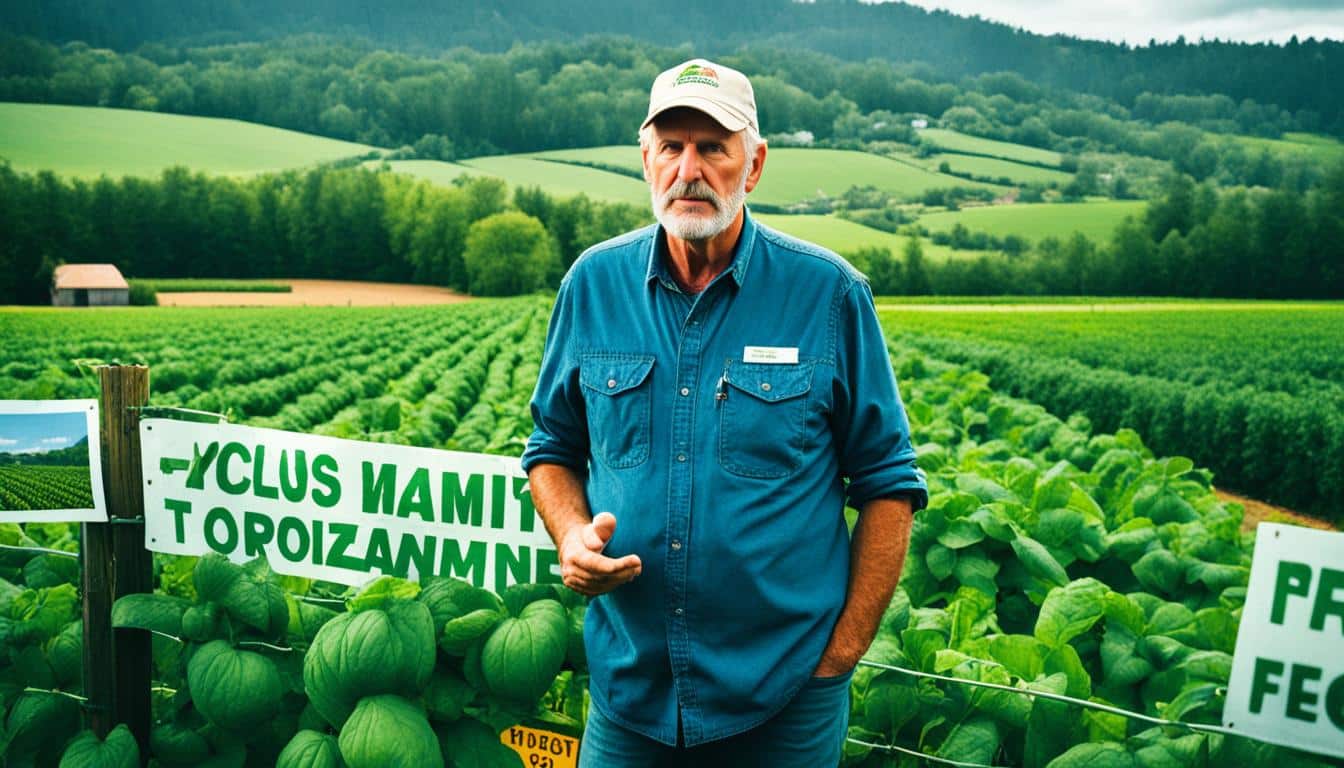
In 2021, the U.S. Department of Agriculture (USDA) only devoted 2% of its research funds to organic farming. This shows how tough it is for organic farmers in the U.S. They are trying hard to practice sustainable farming under growing environmental threats and financial issues. Anil M V, from Organil Services, talks about how farmers manage these challenges.
Organic farmers face many hurdles. These include unpredictable weather, bugs destroying crops, unstable markets, and tough environmental rules. A big issue is not having enough people to work, mainly because many see farming as hard and poorly paid. Also, there are challenges in hiring migrant workers. Organil Services helps out by guiding farmers to get the needed organic certificates and support, aiming to make farming less harmful to the environment.
Organic farming focuses on keeping the environment healthy by using natural methods. It avoids synthetic chemicals. Yet, those who farm organically face many challenges. These difficulties can make it hard to stay sustainable and profitable.
Organic farming is all about boosting the environment with diverse strategies. The aim is to keep the soil rich and the environment safe. Soil health management uses techniques like changing crops, adding compost, and planting covers to make the soil better.
Organic farming has its ups and downs. Pesticide-free cultivation means picking crops less likely to get sick. Bad weather and plant diseases can throw a spanner in the works. This often leads to using clever pest control methods that follow organic rules.
Prices that go up and down can make business tricky. It’s also tough to get and keep organic certification because of the many rules. This demands keeping good records and sticking to those rules.
| Crop | Organic Returns (per acre) | Conventional Returns (per acre) |
|---|---|---|
| Corn | $51 – $66 | $20 – $30 |
| Soybeans | $22 – $41 | $10 – $20 |
There are more problems too, like not having enough workers and high costs. To solve these, we need better funding for organic research. Plus, support from government programmes is vital. Things like National Organic Certification Cost-Share and tax breaks for new organic farmers can help a lot.
Climate change greatly affects organic farming. It pushes farmers to find new ways to deal with serious weather changes. The rise in droughts, floods, and strange weather worries everyone who wants farming to last. So, organic farmers are always thinking of new ways to farm without hurting the environment.
Droughts and floods are big problems for organic farmers. Did you know that in drought years, organic farms can produce up to 40% more than non-organic ones? This shows how strong organic farming methods are.
During droughts, using plants that don’t mind the lack of water and improving the soil are key. They help keep the farm productive. But in flood times, making soil better can stop soil from washing away.
Weather today is hard to predict. So, organic farming has to adapt fast. Research shows that after 5 years, organic farms use less energy and still grow as much as regular farms. This means organic farms are better at dealing with weather changes.
Techniques like planting different crops in one field and using less disturbance to the soil can help a lot. They keep water and nutrients in the soil for the plants to use. This is very important when the weather is all over the place.
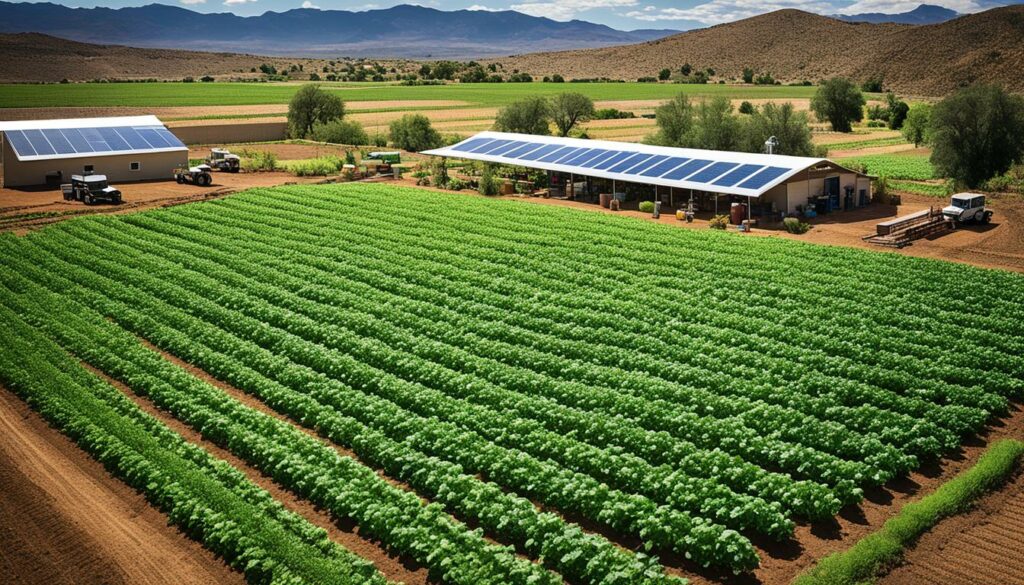
Organic farmers are choosing green ways to farm because of climate change. They are using less soil digging and growing various crops to save the land from harm. These and other strategies like planting crops in turns, covering the ground, and managing the land well keep the farm strong against bad weather. Organic farms that follow these rules show their care for the environment.
| Strategy | Climate Change Mitigation | Example |
|---|---|---|
| Crop Diversification | Enhances carbon sequestration | Multiple crop types in rotation |
| Reduced Tillage | Minimises soil disturbance | No-till farming practices |
| Cover Cropping | Reduces soil erosion | Planting cover crops like clover |
| Soil Health Management | Increases resilience | Using organic amendments |
To wrap up, dealing with how farming affects our environment is very important. To keep organic farming strong, it’s crucial to use good methods. These methods help organic farms stay healthy even when the weather is tough.
Organic farming uses new ways to fight pests and diseases without chemicals. This kind of farming is good for the environment and our health. It shows that we can grow food well without hurting the planet.
Staying on top of pest problems is key in organic farming. Farmers watch over their crops closely to see if pests are becoming a problem. They use special traps, introduce helpful insects, and plant specific crops to keep pests away without chemicals. A big part of this is having healthy soil, which helps plants grow strong.
Farmers must have a plan for managing pests in organic farming. This plan includes knowing about the pests and good bugs. The US Department of Agriculture (USDA) has rules on how to handle pests and diseases. Keeping plant surfaces well covered with organic methods is important.
Crop rotation and using natural materials are common organic practices. These help with pests and diseases. Because organic farming avoids harmful chemicals, it boosts the life and health of plants. This makes farms naturally more resistant to pests and diseases.
Keeping the soil healthy is key in organic farming. It ensures the soil is full of life and diverse. This is vital for farming to work well over a long time. When we focus on soil health, we create an environment where plants can grow strong naturally.
Healthy soil meets several needs like providing nutrients, holding water, and staying aerated. For farming to be sustainable, the soil should have 3 to 6% organic matter. This keeps water and nutrients in good balance. Using too many chemicals can lower the organic matter in soil. This is why farms should use organic methods to keep soils healthy.
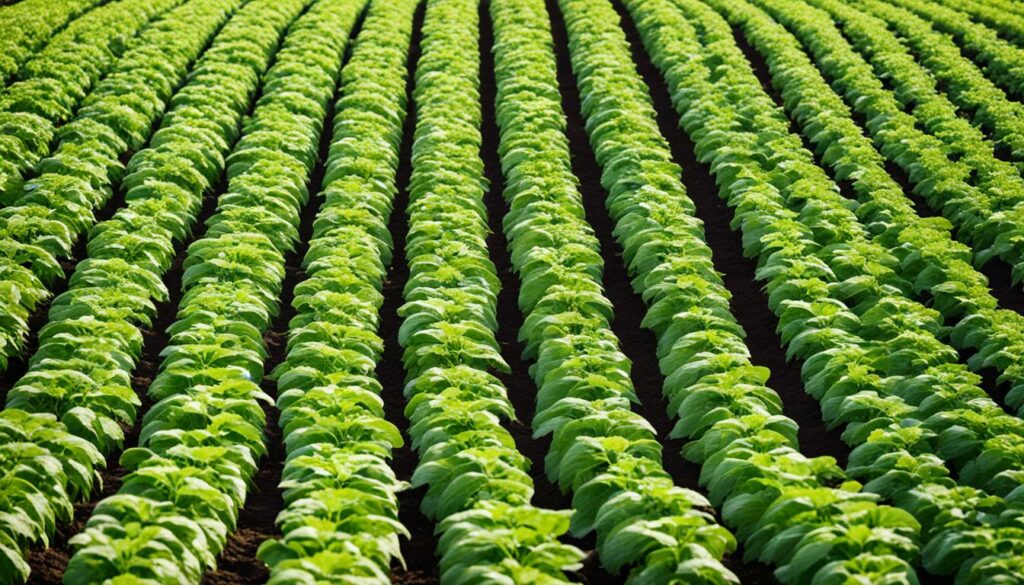
Adding things like compost and green manures boosts the soil. It makes the soil structure better and more fertile. These additions also help good microbes thrive. They turn fresh materials into stable organic matter. This helps the soil ecosystem stay healthy and balanced.
Plants like cover crops and changing what crops are planted each year are very important. These methods keep the soil’s structure and its variety of life healthy. By 2012, many farms in the U.S. were using methods that disturbed the soil very little. But, not enough of them were using cover crops. We need more farms to use these methods to take better care of the soil.
Between 2002 and 2016, the USDA looked at many ways to improve soil health in organic farming. They learned a lot about how the living organisms in soil work together. These tiny creatures, like bacteria and fungi, are key to keeping the soil productive and balanced. By following these research-backed farming methods, we can make sure our soil stays strong and our farms continue to be successful in the future.
Getting organic certified is key for farmers to prove their eco-friendly methods. They must meet strict standards and have thorough checks. This shows they follow the rules of organic farming closely.
Becoming certified starts with sharing a detailed Organic System Plan (OSP). This plan covers how they farm and what they use. It shows their commitment to the organic way of farming.
After sending the OSP, a farm visit is made. Inspectors look at the soil and how pests are managed. This ensures farms stick to the organic rules.
Keeping the certification means following the same good practices consistently. Farm plans must match how they actually farm. Regular visits happen to confirm they’re still organic.
Providers also need to keep good records of what they do from planting to selling. This helps to prove they’re really organic. It makes the whole food chain more clear.
In Alabama, a study found cost is a big issue for farms wanting to go organic. Yet, most believe they can do well without the certified label. Only around 60% think being certified brings more money.
| State | Certified Organic Operations (2019) |
|---|---|
| Alabama | 33 |
| Georgia | 301 |
| Florida | 451 |
The costs of getting and staying organic certified can be challenging. But, a USDA program helps with most of the certification fees. This makes it more affordable for farmers, costing between $450 and $1,250. Still, some in Alabama are not sure if it’s worth it.
The world of organic farming changes with the market and what people want. As more people ask for food grown organically, the chance to sell can be good but also hard. This is because there isn’t always enough of these organically grown products to meet the high demand.
Even though people want more organic food, there isn’t always enough. This is especially true for organic grains. Organic farming can bring in more profit, making about $51 to $66 more for each acre of organic corn, and $22 to $41 more for each acre of organic soybeans than regular crops. But, less than one percent of all farmland is used for organic farming of these crops.
Another big challenge for organic grain farmers is when their crops get contaminated by genetically modified (GM) plants. When GM material goes into organic or non-GM crops, it can cause big financial losses. This shows why it’s important for the government to make laws that help farmers fight against GM seed companies.
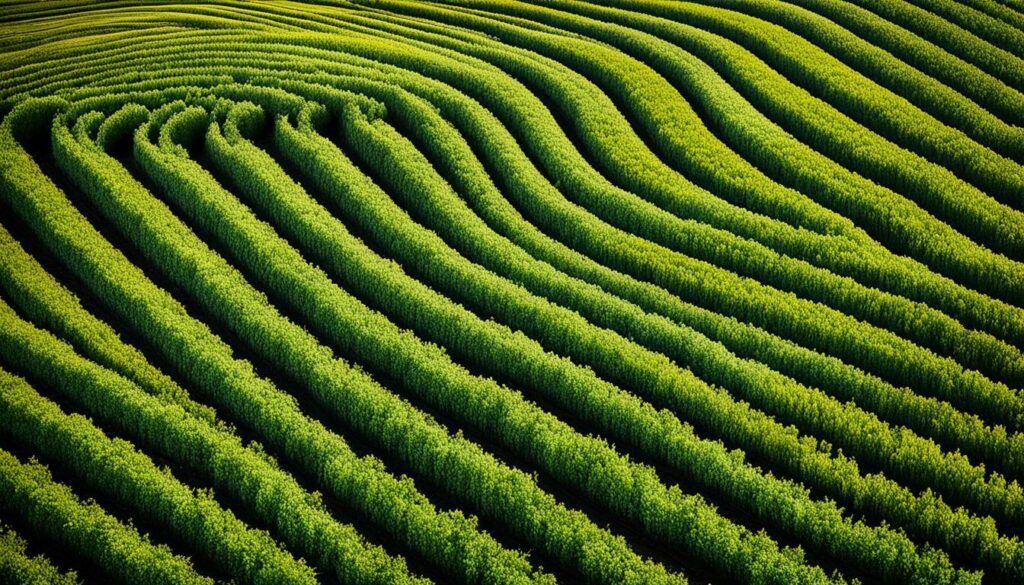
To avoid many of these market risks, we believe in putting more money into research for organic farming. For example, the NIFA should give $50 million each year to develop new types of plants and animals for organic farming. It’s also important for programs like the National Organic Certification Cost-Share to keep getting support. This helps farmers with the costs of getting their products certified.
Organic farming is found at a crossroads of making money and facing unpredictable markets, influenced by changing demands and trends. As we look ahead, we need efforts from both the government and farmers. We must work together to meet the growing needs in a sustainable way.
Organic farming has been facing hard times getting enough workers lately. Many see farm work as low-paid and tough, so not many want to do it. This is especially true because of the rules and how society sees farming. Those who follow sustainable agriculture practices are having to get creative. They are finding new ways to bring in and keep good workers.
Getting skilled people to work on organic farms is tough. Even though more people want organic food, making it takes a lot of work. A study in 2008 found that about 67% of farms, organic and normal, had big issues hiring. This problem is all year round but hits especially hard in businesses like dairy and egg production. They’ve seen more demand as the industry has grown.
Things have gotten worse due to strict immigration laws. Fewer migrant workers can come to help. Mechanising farms has been one solution for some, but it’s not easy for organic farms. They need to do a lot by hand, and it can be expensive.
Keeping workers happy and at the job is a big challenge. Organic farmers must pay well and offer good working conditions. But this can eat into their profits. Since 2008, fewer family members are willing to help out on the farm. Young people are looking for work elsewhere.
Having good training for workers is also critical. In 2008, the U.S. had 13,000 organic farms that needed skilled workers. Training and keeping them isn’t always easy, leading to a lot of turnover. This makes it hard to keep things running smoothly.
One way to help is by being more innovative. Farms can try new methods and grow different things. This can make them less dependent on human labour. It also helps keep labour shortages from becoming too big a problem. By focusing on new ways of working and sticking to their values, farms can get through these tough times.
Environmental rules are now key in agriculture. They present challenges and benefits to organic farmers. These rules demand high standards for water, biodiversity, and waste. They force farmers to use resources wisely.
Abiding by these laws helps the planet. Organic farmers help keep the environment safe for a long time.
Rules protect natural resources. For organic farming, this means following water, biodiversity, and waste laws. Countries like Finland and Austria plan on using 20% of their land for organic farming.
This shows the big push for green agriculture. It aims to protect ecosystems and reduce farming’s harm to nature.
Organic farmers use clever methods to follow the rules. This includes:
India has seen success with these methods. Organic farming there uses less water and chemicals but brings better crops. Across the world, organic farmers often plant cover crops to keep the soil healthy. This is more common in organic farming than traditional farming.
But not all places adopt these methods the same. For example, in 2016, Sikkim became 100% organic. Yet, in England and Wales, choosing organic might mean less crop and more pollution.
| Region | Organic Adoption | Impact |
|---|---|---|
| United States (2012) | 3% of total food sales | Significant market growth |
| European Union | 20% land area goal | Enhanced biodiversity |
| Bhutan | 100% goal by 2020 | Full organic transition |
| Sikkim, India | 100% as of 2016 | Higher yields with less water |
| England and Wales | Potential widespread adoption | 40% lower yield, more emissions |
Starting an organic farm demands a lot of money up front. You might not make as much as other farms at first. There’s also more players in the market. But, with the right moves, organic farms can stand strong financially over time.
Setting up an organic farm can be costly. You’ll need to buy special fertilisers, deal with pests in natural ways, and use methods like crop rotation. These methods take a lot of work. But, because you’re not using harmful chemicals, the prices you can ask for your products might make up for it.
Let’s look at organic wheat as an example. It might not grow as much as traditional wheat. But you can sell it for more because it’s organic.
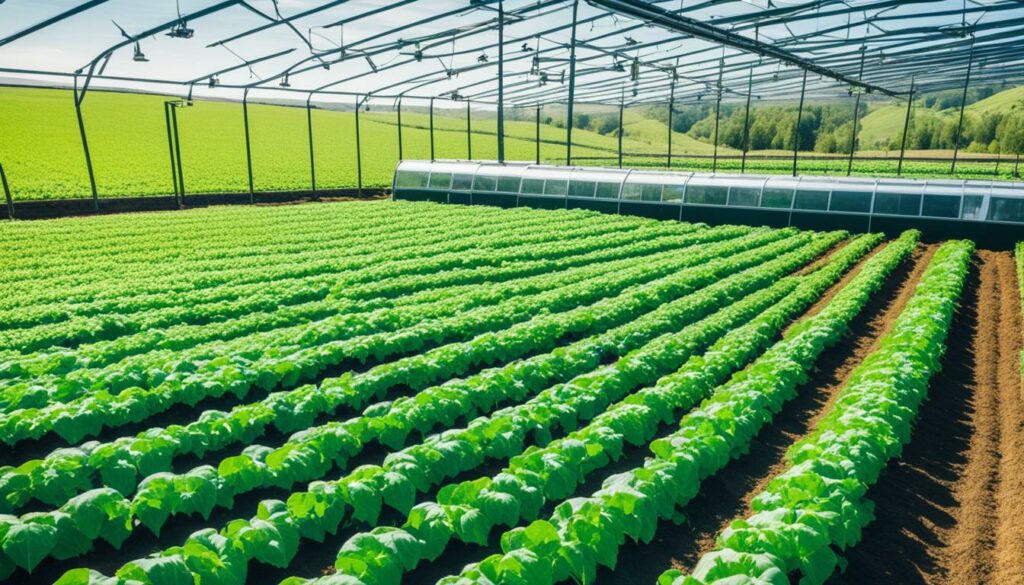
More and more people are getting into organic farming. This means there are more products for sale. And because there’s a lot to pick from, prices can drop. This makes it tough for organic farmers. Plus, dealing with pests without chemicals can be hard.
Being smart and well-planned is key to making money in organic farming. Manage your resources well. Use the latest tech to make things cheaper. Then, think about selling in places where people love organic products. There, you might not have to worry about low prices as much.
Getting a seal of approval from a respected group is a good idea. Yes, it might cost you. But, it can mean more people will trust you and buy what you’re selling.
| Key Factors | Organic Farming | Conventional Farming |
|---|---|---|
| Production Costs | Higher | Lower |
| Selling Prices | Higher | Lower |
| Market Competition | High | Moderate |
| Risk Management | Challenging | Lesser Challenge |
| Yield | Lower | Higher |
Organic farming is tough, but it can be profitable. With the right strategies, you can make your organic farm a lasting success.
Organic farming is growing fast, becoming a key part of U.S. agriculture. It’s getting bigger thanks to help from the government. Programs like OREI and ORG have made a big difference. But, organic farming still needs more support.
The government giving money and help is important for organic farming. The USDA’s push with $300 million for the Organic Transition Initiative is good news. This help makes it easier for farmers to afford getting certified organic. In 2021, they sold $11.2 billion worth of organic food. This shows how vital this support is.
Good insurance and infrastructure help are also critical. With over 17,000 organic farms in 2021, it’s clear we need to protect them. Insurance helps against market changes and bad weather. Government help ensures the right farming facilities are available. The OREI reauthorization until 2023 and NIFA funding prove how important this is.
Groups like the National Sustainable Agriculture Coalition and the Natural Resources Defense Council support farmers. They back the Opportunities in Organic Act, which helps organic farming. Senator Peter Welch introduced this bill. It increases support for organic certification and farming practices. It’s especially good for farmers facing challenges.
Here is a list of key government programs funding organic farming:
| Program | Annual Funding | Established |
|---|---|---|
| Organic Agriculture Research and Extension Initiative (OREI) | $50 million | 2001 (reauthorized in 2018 Farm Bill) |
| Organic Transitions (ORG) Program | $7.5 million | 1998 |
| Organic Transition Initiative | $300 million | 2021 |
Organic farming is key in saving our world’s plants and animals. It uses ways that help the earth and protect living spaces. This way, many different types of plants and animals can live together better.
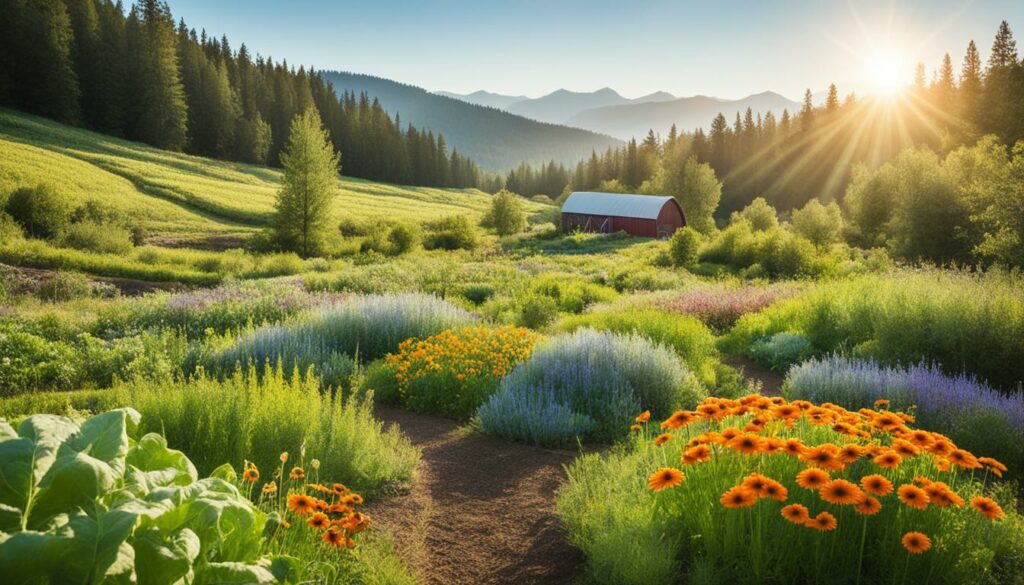
Unlike normal ways of farming, organic methods really boost the number of living things. They have way more kinds of plants and up to 150% more of them. This is great for the ground and the tiny life in it, like the good bugs and the ones that help plants have babies.
This good mix of life means the farms are healthier and can work better. They don’t harm the earth but do a lot of good. Plus, food and other things from these farms are better and safer for us all.
Farms can hurt the earth a lot if they’re not careful. But organic farms are different. They do things that keep animals and plants happy.
One good way is to plant different things together in the same spot. This helps birds that eat bugs and other animals have a good home. Also, putting up places for birds to rest without using chemicals helps a lot. It keeps bad bugs away and lets the good ones do their job.
Organic farmers also use special ways to take care of the ground and everything in it. They plant bushes and change what they grow each time. This makes the farm a nice place for helpers to live and keeps the bad bugs and sickness away. So, the farm stays safe and the earth is happy, too.
The fast change in global market demands is both a big test and a chance for organic farmers. People are choosing more sustainable and healthy goods. This change has made the sale of organic foods reach nearly 125 billion euros in 2021. This shows how much people want these products.
About 72.3 million hectares were used for organic farming in 2019. This number keeps going up, by 1.6% each year. Even with this growth, organic farming only uses 1.5% of all farming land worldwide. To meet the global market demands, farmers must produce more organically. But, they must do this in a way that doesn’t harm the planet.
Australia is a top leader in using organic farmland, with 35.69 million hectares. Argentina and Spain follow close behind. This shows some places are very good for organic farming. But there’s a need to make economic viability better. Organic farming can actually make more money, even with lower yields. To be a good choice, it should make 5-7% more money than regular crops.
To keep up with the market, farmers need to be more efficient and less harmful to the earth. Organic farming helps keep soil in place and puts more carbon underground. In fact, organic soil holds 44% more carbon than regular soil. This way, farming organically can be good for making money and saving the environment.
| Statistic | Details |
|---|---|
| Organic Agricultural Land (2019) | 72.3 million hectares |
| Global Organic Retail Sales (2021) | 125 billion euros |
| Top Organic Land Country | Australia (35.69 million hectares) |
| Contribution to Global Agricultural Land | 1.5% |
| Carbon Storage in Organic Soils | 44% more than conventional soils |
Innovation leads the way in pushing forward organic farming. It deals with many challenges through new technology and methods. Let’s explore how improvements have changed the game in this field.
New technology is key in changing organic farming. It includes precision farming and tech that’s now essential in organic methods. With these tools, we use resources better and cater to crops’ exact nutritional needs. This makes farming both greener and more effective.
Monitoring systems connected by the Internet of Things (IoT) give real-time updates, helping farmers make smart choices. Drones, sensors, and high-end trackers also boost our yield without harming the environment.
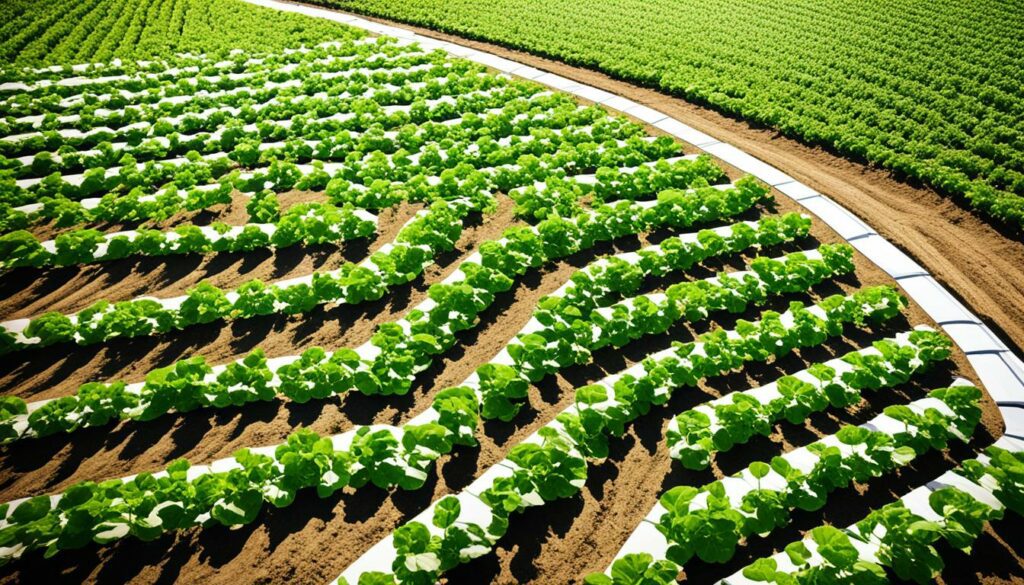
Looking after the soil and being productive sustainably is crucial. For example, switching up the crops helps keep pests off-balance and nourishes the soil. Planting different crops together boosts biodiversity and keeps pests away. This creates a better environment for crops.
Using natural ways to fight pests and improve the soil also makes a big difference. It means the soil stays healthy, doesn’t wash away, and helps save water. These methods make sure organic farming stays strong and efficient.
“Integrated technology and sustainable farming practices are pivotal in overcoming organic farming challenges, ensuring a healthier environment and more efficient agricultural practices.” – Anil M V
The world wants more organic food, showing why labels and knowing the facts matter. Certifications show that farmers follow strict rules, which makes shoppers trust them more. Learning about why organic food is good helps the planet and makes us healthier.
To sum up, innovation keeps organic farming growing. Mixing tech with nature-friendly practices is how we beat problems and build farming that lasts.
Mixing marine biology tips with organic farming is key to changing how we grow food. By using things like biostimulants and biofertilisers from the sea, we can help plants grow stronger and produce more. These steps help overcome big challenges in organic farming. They create a farming system that is good for the earth and efficient too.
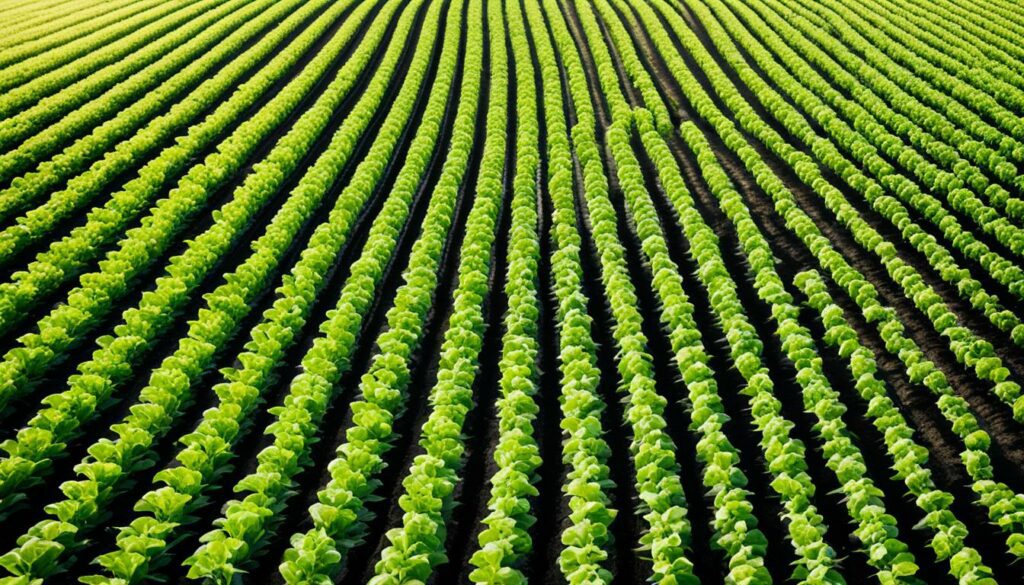
Biostimulants, made from sea life, kickstart plant growth and help them handle stress better. Biofertilisers enrich the soil, making organic farming more productive. There are more than 4101 OMRI-approved biofertilisers available as of 2023. These products are good for growing healthy crops. Since typical organic materials give off just a bit of their nitrogen each year, adding marine-derived products can keep the soil rich. This supports better crop growth.
New ways to control pests draw from marine biology. They offer organic farmers greener and effective pest solutions without chemicals. Using marine products can lead to strategies that fit well with nature. For example, some use the natural balance of species in the sea to control pests on farms. These methods make organic farming sustainable and reduce the use of harmful chemicals.
The connection between marine biology and organic farming, through the use of things like biostimulants and clever pest control, is making farming stronger and better. Organic food sales in the USA, for example, are booming, showing people care. This change could help start a new chapter in farming that is good for the planet and the people too.
Organic farmers show that success comes from hard work, new ideas, and using the best methods. We will look into what experienced organic farmers have done. Their stories can motivate and help others in this area. We will learn how they tackle the challenges of organic farming.
Take, for instance, organic grain farmers. They use smart ways to get more crops from their land. Even though less than one percent of total acreage grows organic corn, soybeans, and wheat, these farmers do really well. They face big obstacles, like crops that have been changed genetically, which affect one in three organic grain farmers in 17 states.
A group of organic farmers in Bangalore also has a great story. They overcame many difficulties in organic farming. They used methods like fighting pests in smart ways and farming that helps the soil. This shows that learning and training are key for farmers to succeed.
In organic farming, using the best methods is key. Farmers stay away from man-made chemicals. Instead, they use things like mulch, cover crops, and natural enemies of pests. Adding compost, planting different crops, and changing the crops grown helps keep the soil healthy. These steps are essential for not just organic farming but also keeping pests and diseases under control.
Knowing how to sell the produce is crucial for organic farmers. They reach out to people who want food grown without harmful chemicals. This is done through strong marketing and working closely with local shops and markets. Selling at farmers’ markets and online is very helpful to increase the demand for their products.
There are also important policy recommendations for organic farming. This includes more research money, federal laws to repay farmers if their crops are harmed by pesticides, and tax benefits for people who want to start organic farming. These steps show how government support can help the organic farming sector grow.
To wrap up, we learn a lot from these cases and tips. They show a path for those thinking about starting organic farming. By following the footsteps of these successful farmers, we can all achieve more in organic farming. This leads to using better farming methods and growing the organic farming sector.
Dealing with organic farming challenges is vital. It helps us see the big positive effects of doing things sustainably. Without using synthetic chemicals, this kind of farming is all about using nature’s own balance for weed and pest control. Things like mulching and introducing good bugs, not bad ones, make a safer environment for all of us.
Making sure the soil is rich and healthy is key in organic farming. Farmers don’t use artificial fertilisers. Instead, they feed the soil with compost and manure to make it even better. They also mix up the crops they grow and keep things varied to protect the soil from getting tired.
But, selling organic products can be tough. To get around this, strong marketing and educating the public are crucial. Also, using smart techniques that protect the soil, like not disturbing it too much (no-till) and planting trees with your crops (agroforestry), helps a lot. These methods secure a healthy future for organic food.
Getting organic food to more people means being smart about where and how we sell it. Farm markets, local community plans, and the internet all help spread the word about organic food. Teaching farmers about the best ways to grow food without harming the earth is also very important. With more help from the government, organic farming will keep us and the planet healthier for the long run.
Organic farmers face many obstacles. They deal with unpredictable weather and attacks from pests. Other issues include diseases, changing markets, not enough workers, and strict rules.
Climate change leads to more droughts, floods, and unpredictable weather. To cope, farmers choose tough crops, use less soil disturbance, and adjust planting times.
They avoid synthetic chemicals. Instead, they use natural pesticides, helpful bugs, changing crops, and habits that stop pests from spreading.
Soil is key in organic farming. Farmers add things like compost and grow different plants to keep the soil healthy. This helps protect the land and keep it productive.
To get certified, producers must follow strict rules and pass checks. They have to prove they meet organic standards with their records and practices.
The money organic farmers make can change a lot. This happens because of what people want to buy, global trade, and money values. It makes the farming business challenging.
Getting enough workers is tough. Many think farming is hard and doesn’t pay well. To fix this, we need better laws, more money for workers, and nicer work environments.
They have to follow rules about water, nature, and waste. To do this, they use the best ways to farm and care for the environment.
Starting an organic farm costs a lot. The profits might be less because of the tough competition. Good planning and finding special markets are keys to financial success in organic farming.
Help from the government, like money and protection plans, can make farms stronger and safer to run. But sometimes, farms don’t get enough help, so more support is needed.
Organic farms help nature thrive. By planting diverse crops and making homes for helpful animals, organic farmers support local wildlife.
Organic farmers must meet what customers want but also keep things balanced. It’s important to sell true organic products and protect the earth even with market challenges.
New technology and smart ways to farm help organics deal with tough issues. It’s important to keep learning and getting better to succeed in organic farming.
Marine biology brings cool ideas to help manage pests and make farms stronger. Using these ideas could change the way we do organic farming for the better.
Stories of successful farms are a gold mine of learning. They teach us how to do well and deal with the hard parts of organic farming.